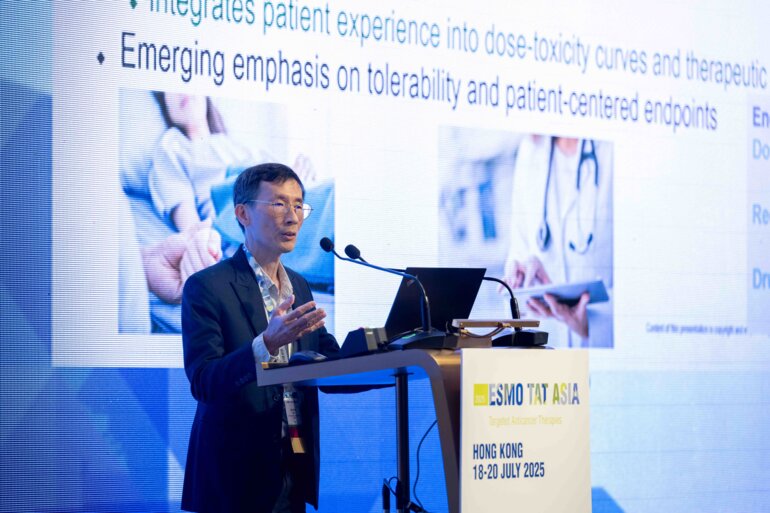Antibody–drug conjugates may represent a step up from existing therapeutic options, but further optimisation and biomarker analyses are required.
Targeted therapies marked the start of a new era of precision medicine in lung cancer. However, treatment options in the second line and beyond remain limited. Theoretically, antibody–drug conjugates (ADCs) offer the precision of targeted therapies with the power of chemotherapy, and the number of ADCs in development is expanding rapidly across several different targets. The HER-2 targeted ADC, trastuzumab deruxtecan, represents a success story, with approval in China for patients with HER2-mutated advanced non-small cell lung cancer (NSCLC), based on the results of the DESTINY-Lung02 (J Clin Oncol. 2023;41:4852–4863) and DESTINY-Lung05 phase II trials (Cancer Res. 2024;84(7_Suppl):CT248). Searching for further improvements, positive preliminary results were published recently from a Chinese phase II trial of trastuzumab rezetecan (SHR-A1811), which differs only in its payload (Lancet Oncol. 2025;26:437–446).
Focusing on HER3-directed ADCs, although patritumab deruxtecan was shown to improve progression-free survival versus chemotherapy in the phase III HERTHENA-Lung02 trial in EGFR-mutated NSCLC following EGFR tyrosine kinase inhibitor (TKI) progression, no overall survival benefit was observed and there were two drug-related deaths from interstitial lung disease (J Clin Oncol. 2025;43(16_Suppl):8506). BL-B01D1, an EGFR–HER3 bispecific ADC, may represent the next step, with preliminary antitumour activity shown in a Chinese phase I trial (Lancet Oncol. 2024;25:901–911) and a phase III trial ongoing in patients with EGFR-sensitive mutations after EGFR-TKI failure (NCT06382116).
With TROP-2 as the target, findings appear positive in patients with EGFR-mutated NSCLC who received datopotamab deruxtecan, according to results from the phase II TROPION-Lung05 and phase III TROPION-Lung01 trials (J Thorac Oncol. 2025:S1556-0864(25)00761-0). For those without actionable genomic alterations, TROP-2 normalised membrane ratio, measured by quantitative continuous scoring, was found to predict clinical outcomes with datopotamab deruxtecan (J Thorac Oncol. 2025:19;S2–S3), highlighting the key role that biomarker analysis may play in ADC development. Other promising early-stage agents include the first c-Met-directed ADC, telisotuzumab vedotin (J Clin Oncol. 2024;42:3000–3011), and the integrin beta-6 ADC, sigvotatug vedotin (J Clin Oncol. 2024;42(16_Suppl):8521).
It remains to be seen whether efforts to optimise ADCs, such as the payload, drug-to-antibody ratio and linkers, can provide the right balance of benefit to risk. The way ahead likely involves further refinements, exploring new targets and bispecific approaches, and incorporating more extensive biomarker analyses to help unleash ADCs’ full potential.
Programme details
Mok TSK. Fast forward to the future: Personalised drug development for lung cancer. ESMO Targeted Anticancer Therapies Asia Congress 2025
Keynote Lecture, 20.07.2025, h. 11:35 – 12:05, Grand Ballroom 1







